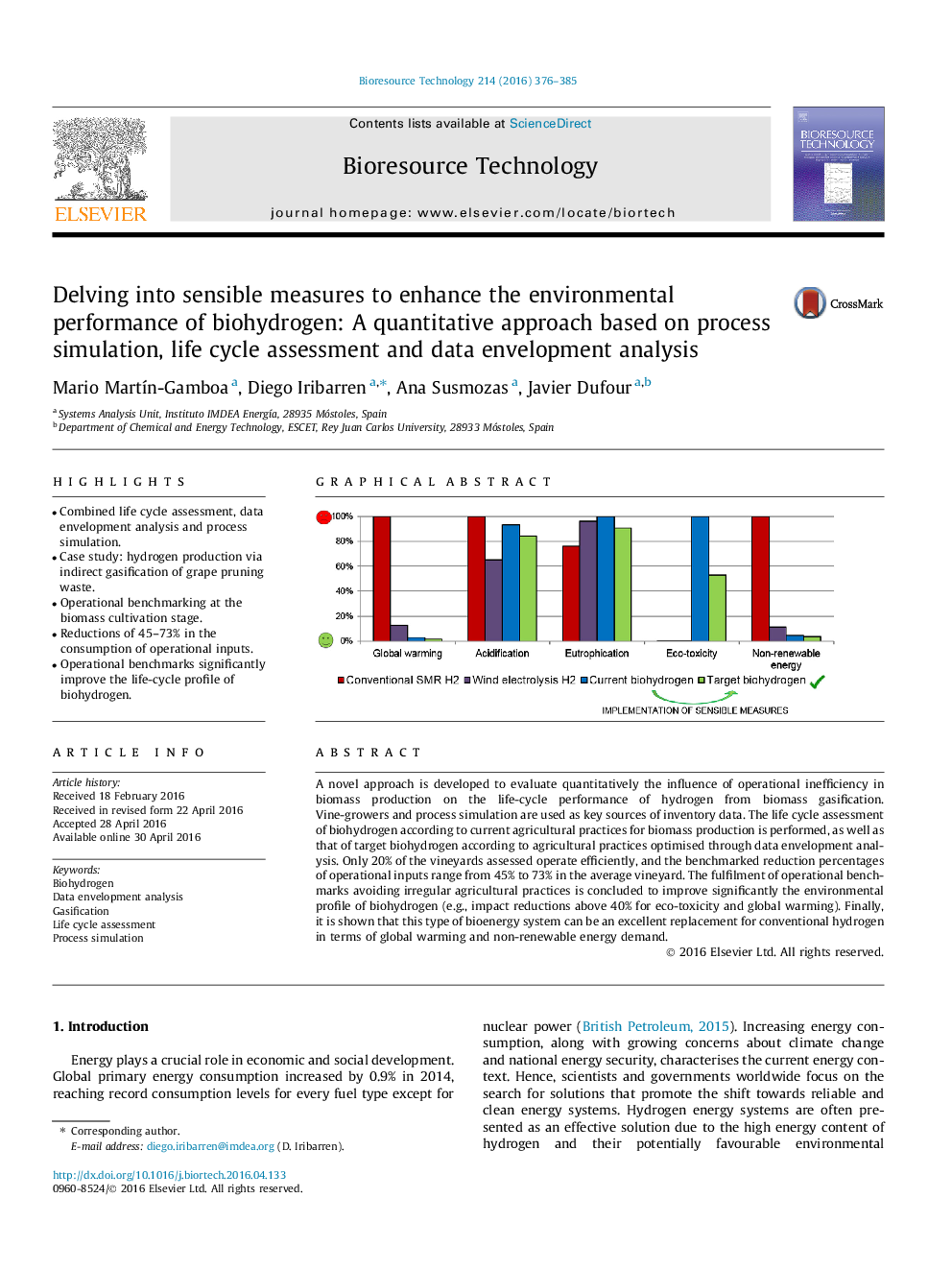| Article ID | Journal | Published Year | Pages | File Type |
|---|---|---|---|---|
| 679076 | Bioresource Technology | 2016 | 10 Pages |
•Combined life cycle assessment, data envelopment analysis and process simulation.•Case study: hydrogen production via indirect gasification of grape pruning waste.•Operational benchmarking at the biomass cultivation stage.•Reductions of 45–73% in the consumption of operational inputs.•Operational benchmarks significantly improve the life-cycle profile of biohydrogen.
A novel approach is developed to evaluate quantitatively the influence of operational inefficiency in biomass production on the life-cycle performance of hydrogen from biomass gasification. Vine-growers and process simulation are used as key sources of inventory data. The life cycle assessment of biohydrogen according to current agricultural practices for biomass production is performed, as well as that of target biohydrogen according to agricultural practices optimised through data envelopment analysis. Only 20% of the vineyards assessed operate efficiently, and the benchmarked reduction percentages of operational inputs range from 45% to 73% in the average vineyard. The fulfilment of operational benchmarks avoiding irregular agricultural practices is concluded to improve significantly the environmental profile of biohydrogen (e.g., impact reductions above 40% for eco-toxicity and global warming). Finally, it is shown that this type of bioenergy system can be an excellent replacement for conventional hydrogen in terms of global warming and non-renewable energy demand.
Graphical abstractFigure optionsDownload full-size imageDownload as PowerPoint slide
